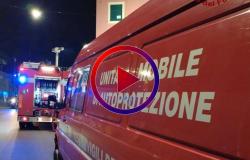NASA’s DISSIPATION mission: studying the effect of auroras on the atmosphere
On November 8, 2023, NASA launched the DISSIPATION mission from Fairbanks, Alaska, with the goal of studying the effects of auroras on the atmosphere. The mission was launched by a sounding rocket, a type of rocket used primarily for scientific research.
The launch of the DISSIPATION mission
The sounding rocket and the mission
The sounding rocket launched from the Poker Flat Research Range in Fairbanks, Alaska, on November 8, 2023, carrying NASA’s Goddard Space Flight Center’s DISSIPATION mission. The rocket was launched into an area of auroras and successfully captured data to understand how auroras warm the atmosphere and cause high-altitude winds.
The BEAM-PIE mission
The teams continue to support a second sounding rocket launch for the BEAM-PIE mission, a Los Alamos National Laboratory mission that will use a beam of electrons to create radio waves by measuring how atmospheric conditions modulate them. The data collected is crucial for interpreting measurements from many other missions.
Sounding rockets and the NASA program
What are sounding rockets
Sounding rockets are suborbital rocket launches used primarily for scientific research. They are designed to carry instruments into the upper atmosphere and near space to conduct experiments and collect data on atmospheric conditions, astronomical observations and even microgravity effects. Unlike satellites, sounding rockets do not enter orbit around the Earth. They follow a parabolic trajectory, which allows them to rise to significant altitudes before falling back to Earth, typically within a short period of time ranging from five to twenty minutes.
NASA’s sounding rocket program
For more than 40 years, NASA’s sounding rocket program has provided important scientific, technical, and educational contributions to America’s space program and is one of NASA’s most robust, versatile, and cost-effective flight programs. NASA’s sounding rocket program, funded by NASA’s Heliophysics Division, is operated at the agency’s Wallops Flight Facility in Virginia, beneath NASA’s Goddard Space Flight Center in Greenbelt, Maryland.





